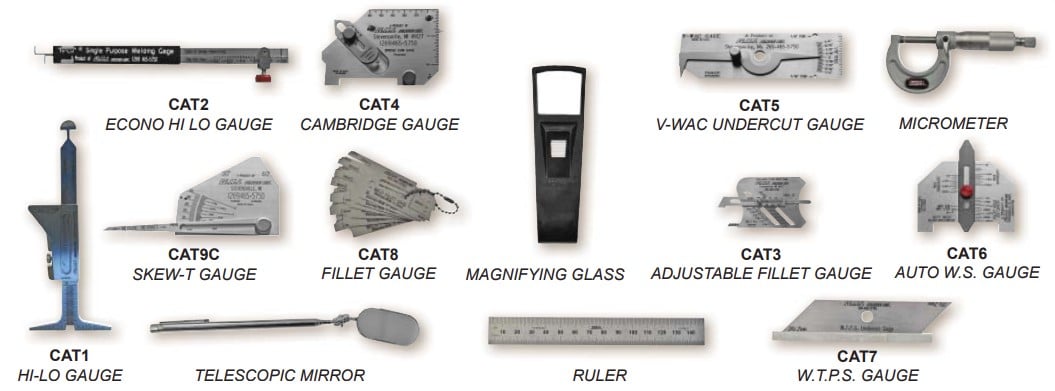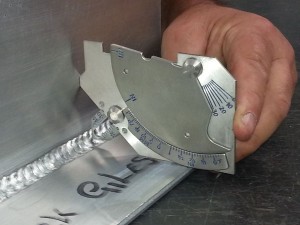What to Get out of a Comprehensive Welding Inspection Milwaukee Process
What to Get out of a Comprehensive Welding Inspection Milwaukee Process
Blog Article

Discovering the Various Techniques and Criteria of Welding Evaluation for Getting Conformity and Dependability in Engineering Applications
The significance of welding inspection in engineering applications can not be overstated, as it serves as a vital safeguard for ensuring structural honesty and compliance with market criteria. Numerous approaches, consisting of aesthetic evaluation and progressed non-destructive screening strategies, give important understandings right into the high quality of welds.
Relevance of Welding Examination
Welding inspection plays an essential function in making sure the stability and security of welded frameworks. This procedure entails the organized examination of welds to confirm conformity with predetermined criteria and specs. The value of welding assessment can not be overstated, as it functions as a guard against possible failings that can result from insufficient welding techniques. Via rigorous assessment, flaws such as fractures, spaces, and inadequate blend can be determined early, consequently avoiding tragic failures that may cause structural collapse or safety dangers.
In addition, welding assessment is essential for maintaining quality control throughout the welding procedure. It makes certain that the welds satisfy the required mechanical and physical properties needed for their designated applications. Regular inspections additionally foster a culture of responsibility and constant enhancement within welding operations, motivating adherence to ideal practices and sector requirements.
In controlled sectors such as aerospace, production, and building, rigid welding examination methods are mandated to conform with legal and safety and security needs. Inevitably, reliable welding assessment not just secures human life and property yet additionally improves the durability and integrity of welded frameworks, making it an important aspect of engineering and building and construction.

Common Welding Assessment Approaches
A range of inspection techniques are employed to examine the quality and stability of welds, each customized to identify specific sorts of problems. Amongst the most usual approaches is aesthetic inspection, which includes a detailed exam of the weld surface area to determine noticeable flaws such as fractures, undercuts, and insufficient blend. This technique is commonly the initial step in the evaluation process due to its simpleness and cost-effectiveness.
Another extensively used method is radiographic assessment, where X-rays or gamma rays pass through the weld to expose interior defects. This technique is specifically effective for finding porosity and inclusions within the weld material. Likewise, ultrasonic testing utilizes high-frequency acoustic waves to determine internal flaws, giving a comprehensive analysis of the weld's stability.
Moreover, magnetic bit assessment is used for ferromagnetic products, permitting the detection of surface and near-surface problems by observing and using magnetic fields fragment patterns. Last but not least, dye penetrant screening involves using a fluid dye to the weld surface area, exposing fractures and various other suspensions upon evaluation. Each of these approaches plays an essential function in ensuring weld high quality and conformity with sector criteria
Non-Destructive Checking Strategies
Non-destructive testing (NDT) strategies are vital tools in the evaluation of weld high quality, permitting assessors to assess the honesty of bonded joints without creating damage to the materials. Various NDT approaches are utilized to determine possible defects, guaranteeing that welds meet the needed criteria for safety and security and performance.
Among one of the most prevalent methods is ultrasonic testing (UT), which utilizes high-frequency acoustic waves to find inner defects such as gaps or splits. Radiographic screening (RT) utilizes X-rays or gamma rays to produce photos of welds, revealing any kind of gaps within the material. Magnetic particle screening (MT) is efficient for discovering surface area and near-surface issues in ferromagnetic products through the application of electromagnetic fields and contrasting bits.
Liquid penetrant screening (PT) is another extensively made use of technique that entails applying a dye to the surface of the weld, which permeates right into any kind of splits, making them visible under ultraviolet light. Each of these techniques supplies distinct advantages and restrictions, and the choice of a proper strategy is crucial to attaining accurate assessments of weld integrity. Inevitably, the implementation of NDT methods substantially adds to the reliability and safety and security of engineering applications.

Regulative Specifications and Conformity
In the world of welding assessment, adherence to governing criteria and compliance is extremely important to guarantee the safety and security and integrity of welded frameworks (Welding Inspection Milwaukee). Different organizations, consisting of the American Welding Culture (AWS), the American Culture of Mechanical Engineers (ASME), and the International Company for Standardization (ISO), have actually developed standards that regulate welding techniques and examination procedures. These standards provide a structure for quality control, describing the needed credentials for inspectors and the methodologies for assessing weld integrity
Conformity with these regulative standards not just improves the architectural integrity of welded settings up however additionally mitigates threats linked with failures, which can have tragic repercussions. Examinations must be done utilizing defined treatments, including aesthetic, ultrasonic, and radiographic techniques, to make sure that welds meet defined criteria.
Furthermore, adherence to these standards is typically required by regulation, especially in sectors such as aerospace, production, and building and construction. Routine audits and certifications are vital to maintain compliance, thus fostering a culture of safety and security and quality see this site within organizations. Inevitably, regulative requirements and compliance function as the foundation of reputable welding inspection techniques, making certain that crafted frameworks satisfy both efficiency assumptions and safety requirements.
Best Practices for Welding Evaluation
While maintaining conformity with regulative requirements is critical, applying finest techniques for welding evaluation better enhances the safety and security and integrity of welded frameworks. Effective welding examination starts with extensive preparation, Visit This Link which consists of recognizing the specific requirements of each task and ensuring inspectors are trained in suitable techniques and requirements.
Using a detailed assessment list assists to guarantee all important elements are evaluated, such as weld size, penetration, and visual problems. Non-destructive screening (NDT) techniques, such as radiographic or ultrasonic screening, must be employed where suitable, providing a more thorough examination of weld high quality without endangering the honesty of the materials.
Paperwork plays a substantial function in best methods; keeping exact documents of assessments, including pictures, test outcomes, and compliance records, makes sure accountability and promotes future analyses. Additionally, cultivating a society of open communication between welders and inspectors can bring about early identification of potential concerns, advertising immediate corrective activities.
Conclusion
In summary, the implementation of extensive welding examination approaches and adherence to established requirements are important for making certain conformity and reliability in engineering applications - Welding Inspection Milwaukee. Strategies such as aesthetic examination, radiographic testing, and ultrasonic screening function as crucial tools in keeping and determining defects quality control. By promoting a culture of accountability and quality, companies can boost the stability and longevity of bonded structures, eventually adding to the safety and security and efficiency of design tasks
Numerous methods, including visual evaluation and progressed non-destructive testing strategies, offer necessary insights right into the quality of welds.Welding examination plays an essential duty in making certain the integrity and safety of bonded structures.A selection of inspection approaches are utilized to assess the top quality and honesty of welds, each tailored to discover specific kinds of problems.One more extensively made use of method is radiographic inspection, Recommended Reading where X-rays or gamma rays penetrate the weld to disclose inner problems.In the realm of welding evaluation, adherence to regulatory standards and compliance is paramount to ensure the safety and security and integrity of bonded structures.
Report this page